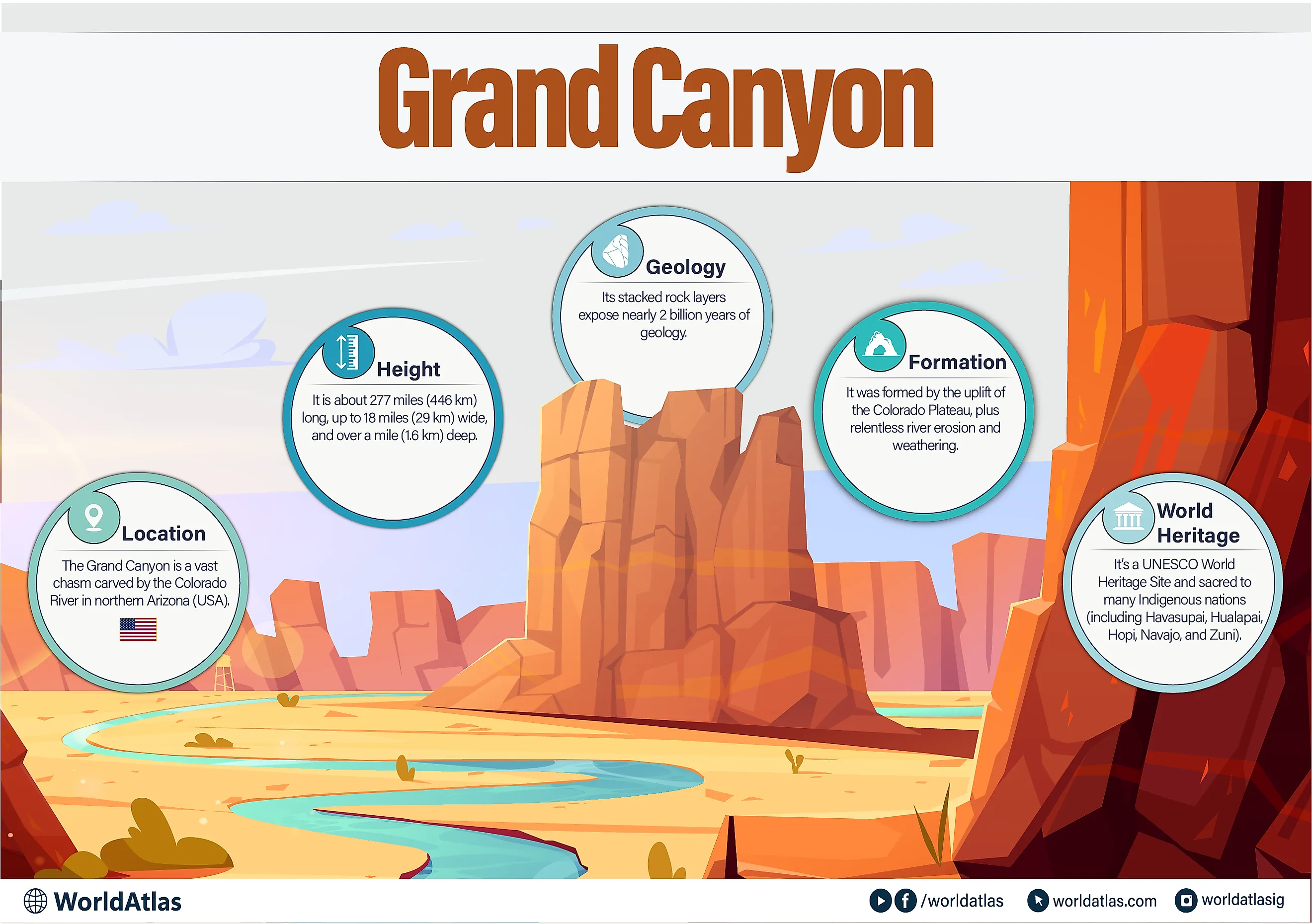
Grand Canyon
The Grand Canyon National Park covers an area of 4,926.08 sq. km in the extreme northwestern corner of the US State of Arizona. The principal feature of this National Park is the massive Grand Canyon. Considered as one of the Seven Natural Wonders of the World, the Grand Canyon has been created by the Colorado River by the continuous erosion over thousands of years. The Grand Canyon is famous worldwide for its huge size and colorful landscapes that attracts numerous visitors from all over the globe.
Geography Of The Grand Canyon
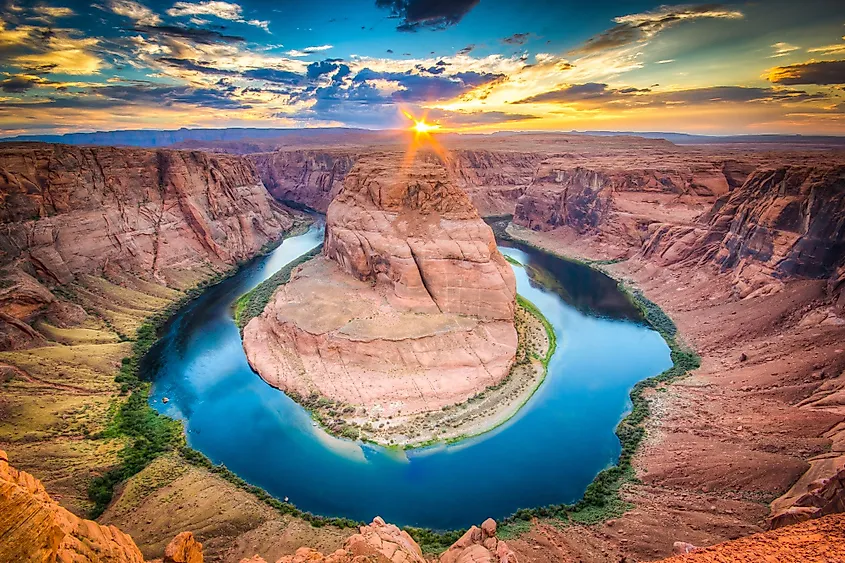
Located in the southwestern corner of the Colorado Plateau, the Grand Canyon forms one of the six physiographic sections of the Colorado Plateau Province. The Grand Canyon has a length of about 446km, a maximum width of 29km, and reaches a maximum depth of 1,857m. The wide intricately carved chasm of the Grand Canyon contains many buttes, gorges, peaks, and ravines. The canyon follows a winding course from the northern boundary between Arizona and Utah, and the mouth of the Paria River to the Grand Wash Cliffs that is located close to the Nevada state line. The first part of the canyon starting from Lees Ferry to its meeting with the Little Colorado River is referred to as the Marble Canyon. Several surrounding tributary washes and side canyons are also included within the Grand Canyon. The most beautiful and deepest section of the Grand Canyon is situated within the central part of the Grand Canyon National Park and extends for a length of 90km from Lake Powell to Lake Mead. Located at an elevation of more than 2,529m, the North Rim of the Grand Canyon is placed at a much higher elevation than the South Rim, which is the most visited part of the Grand Canyon.
Geology Of The Grand Canyon
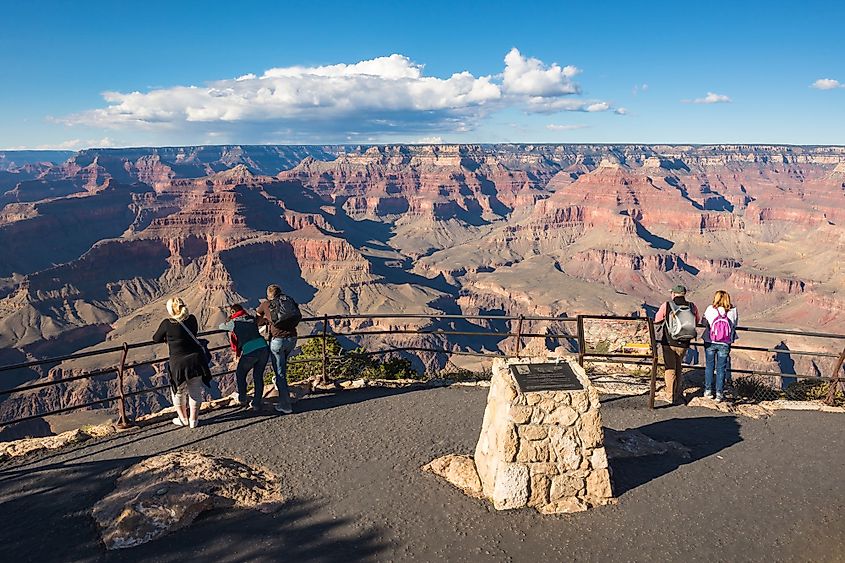
Geologists believe that the Grand Canyon began to form more than 70 million years ago when the Colorado Plateau started to rise due to the action of the colliding tectonic plates. The Apatite/Helium thermochronometry study has revealed that the Grand Canyon reached its current depth about 20 million years ago. The principal geologic exposures of the Grand Canyon range from the 2-billion-year-old Vishnu Basement Rocks that are located at the bottom to the 270-million-year-old Kaibab Limestone located at the top of the Rim. It is estimated that about 6 million years ago, the Colorado River started carving its way downwards, and its rapid velocity and huge volume helped to form the spectacular features of the Grand Canyon.
Climate
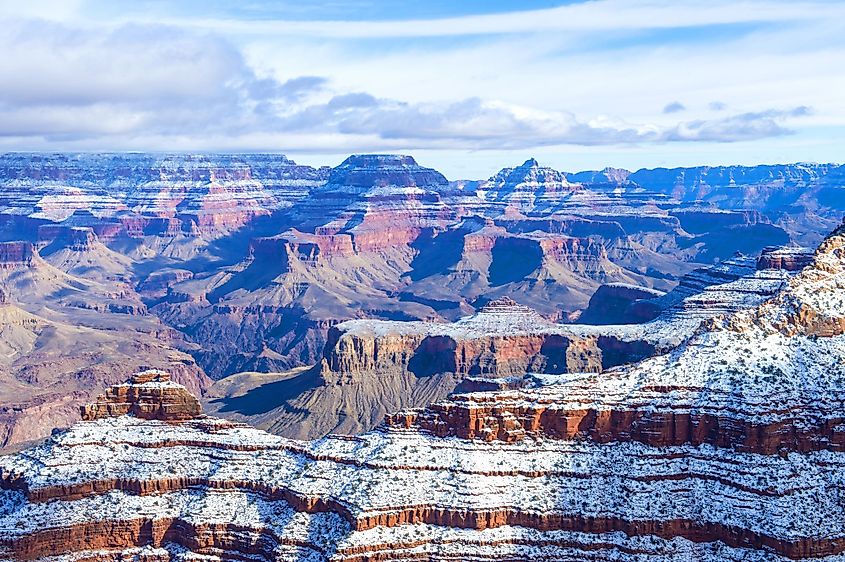
Both the North and South Rims of the Grand Canyon experience all four seasons throughout the year, but the climate of the two rims greatly varies with the change of elevation. Due to its higher elevation, the North Rim of the Grand Canyon receives higher precipitation and is comparatively much cooler than the South Rim. The North Rim receives an average of 69cm of rainfall and 370cm of snowfall, while the South Rim receives about 41cm of rainfall and 150cm of snowfall. The Inner Gorge of the Grand Canyon experiences a summer temperature of 37.8°C, while during winters, the temperature drops to -17.8°C along the rim of the canyon.
Wildlife Of The Grand Canyon
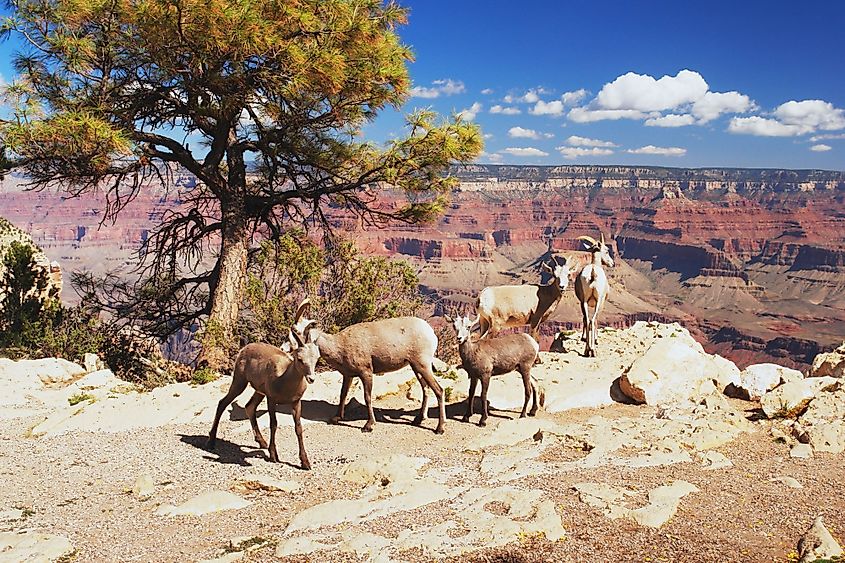
More than 1,737 known vascular plant species, 64 species of moss, 167 species of fungi, and 195 species of lichen are found in the Grand Canyon National Park. The Grand Canyon also supports several endemic plant species that are only known within the boundaries of the National Park. The US Fish and Wildlife Service has granted special status to about 63 endemic plants that are found in the National Park. Both the rims of the Grand Canyon are covered by ponderosa and pinyon pine forests. The vegetation of the Canyon’s western section is influenced by the Mojave Desert, while the vegetation of the eastern section is influenced by the Sonoran Desert. In addition to this, about 129 vegetation communities are found in the Grand Canyon National Park. The Grand Canyon supports a wide variety of flora and fauna. Over 91 species of mammals, 450 species of birds, 48 species of reptiles, 10 species of amphibians, and numerous invertebrate species are found in the Grand Canyon area. Some of the notable fauna that is found here include Mountain Lions, coyotes, elk, mule deer, bighorn sheep, canyon bats, Arizona black scorpion, California condor, Red-tailed hawk, Eastern collared lizard, Grand Canyon rattlesnake, desert gopher tortoise, etc.
Brief History Of The Grand Canyon
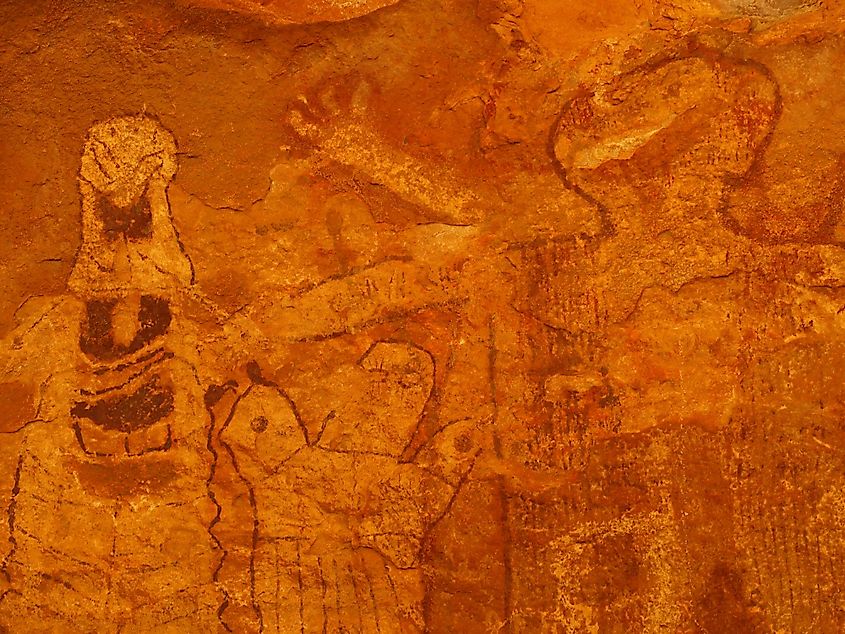
Archaeologists believe that the Grand Canyon area was inhabited by the indigenous Ancestral Puebloans for several years. Besides the Ancestral Puebloans, the Cohonina people inhabited the western part of the Grand Canyon, while the Sinagua people inhabited the southeastern part. The Hualapai, Havasupai, and the Quechan people who currently inhabit the area are believed to have originated from the Cohonina people. Various petroglyphs have also been found in the caves and walls of the Grand Canyon. In September 1540, the Spanish conquistador Garcia Lopez de Cardenas became the first European to see the Grand Canyon. The American geologist John Strong Newberry became the first geologist to visit the Grand Canyon in 1858. The US Army soldier and geologist Major John Wesley Powell led the first expedition to explore the Grand Canyon and the Colorado River in 1869. It is said that the Canyon was originally referred to as the “Big Canyon” and in 1871, Powell became the first person to rechristen the “Big Canyon” as the “Grand Canyon”. In 1893, President Benjamin Harrison first protected the Grand Canyon by declaring it as a forest reserve. In 1903, US President Theodore Roosevelt visited the Grand Canyon and on January 11, 1908, he designated it as a National Monument. On February 26, 1919, US President Woodrow Wilson established the Grand Canyon National Park.











